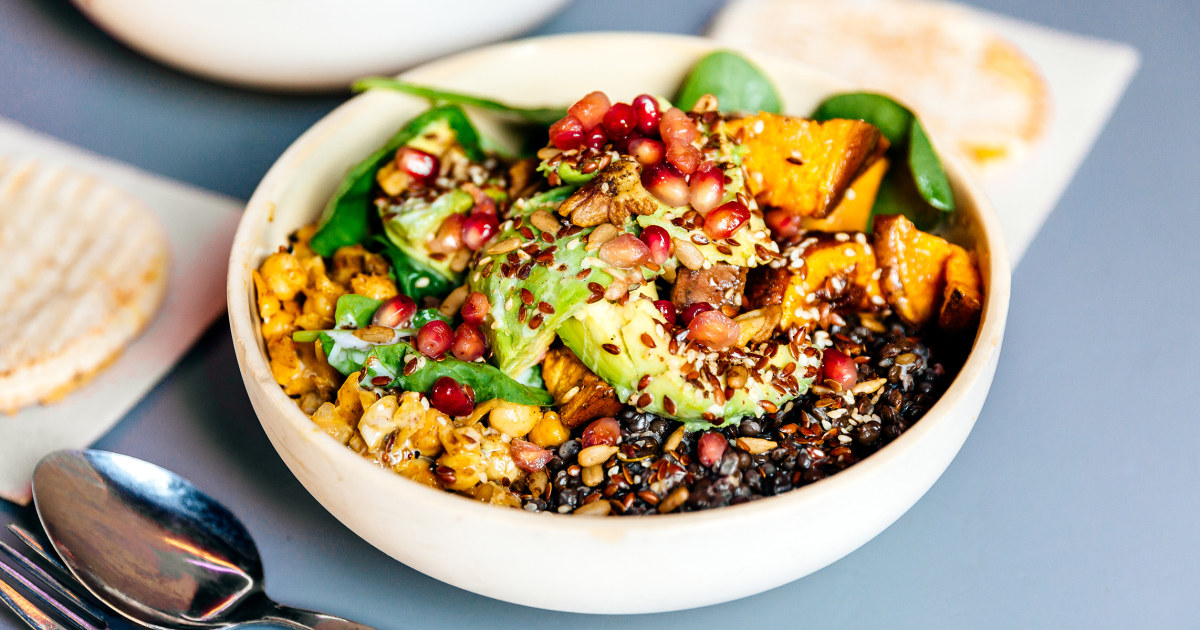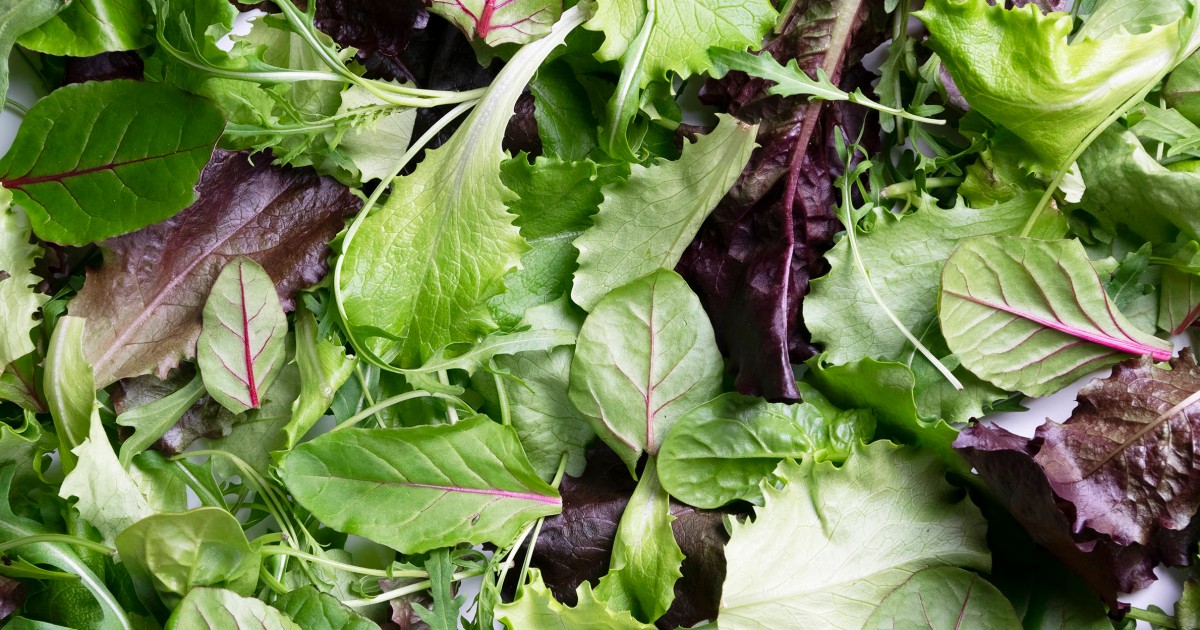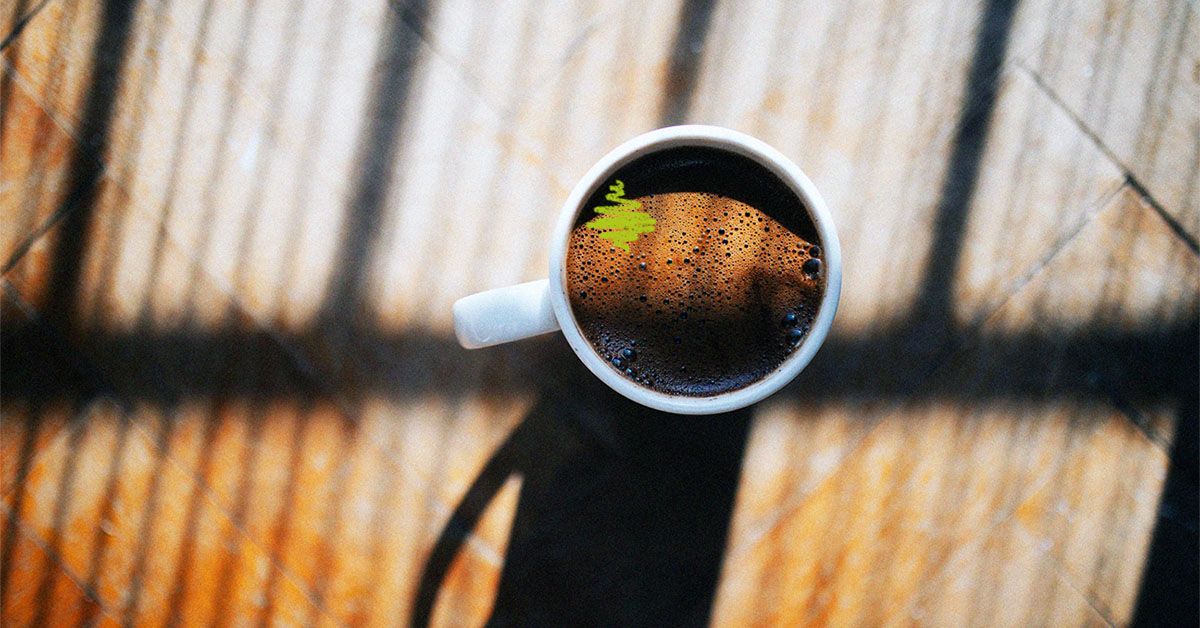Many people want to incorporate more plant-based foods into their diets but feel overwhelmed by the thought of giving up meat and animal products entirely. If you can relate, the flexitarian diet could be the perfect solution.
The flexitarian diet encourages a plant-forward approach without requiring you to cut out eggs, dairy, seafood or meat completely. Instead, you’ll simply reduce your intake of animal-based foods, allowing you to enjoy many of the same health benefits as vegetarians while also making a positive impact on the environment.
The flexitarian diet — created by registered dietitian-nutritionist Dawn Jackson Blatner and detailed in her book of the same name — is usually ranked as one of the best overall diets by U.S. News & World Report because it’s, as the name suggests, pretty flexible. The fact that it’s flexible also makes it more likely to result in long-term healthy eating habits. Plus, it’s versatile enough to please both plant-based eaters and meat lovers alike, making it family- and group-friendly.
Here’s what to know about the flexitarian diet to decide if it’s right for you.
What is the flexitarian diet plan?
The flexitarian diet is essentially a semi-vegetarian diet, where most of what you consume is plant-based. But you can also eat meat, dairy and eggs sometimes. While the diet doesn’t have strict rules, Blatner suggests starting with a couple of meatless meals a week and gradually increasing your plant-based options over time. Even if you’re eating a meal that includes animal foods, the key is to make plants the focus of your meals, with meat, dairy and seafood portions more like the size of a side dish rather than the main course.
What foods do you eat on a flexitarian diet?
To truly follow a flexitarian diet, you’ll need to eat mostly:
- Vegetables
- Fruits
- Nuts
- Seeds
- Beans
- Legumes
- Whole grains
You can eat in smaller amounts:
- Meat
- Dairy
- Butter
- Eggs
- Seafood
Flexitarian diet health benefits
Much of the benefit of following a flexitarian diet comes from eating more veggies and plant-based items than you did previously. Research shows that adding more of these foods to your diet and cutting down on animal products and ultraprocessed foods, including those with added sugar and refined grains, can protect you from numerous chronic illnesses.
The health benefits of following a flexitarian diet include:
- Protecting your brain health, especially your memory, and reducing your risk of dementia
- Assisting in weight loss or maintenance
- Reducing the risk of Type 2 diabetes and cardiovascular problems
- Boosting mental well-being
- Lengthening your lifespan and boosting your quality of life
The reason plant-based foods provide these benefits is that they’re rich in fiber, antioxidants, essential vitamins and minerals, and other bioactive, health-protecting substances while being naturally lower in calories. Additionally, the environmental impact of a flexitarian diet is less than that of a meat-heavy diet, as plant-based foods have a smaller carbon footprint than meat.
What other benefits can I expect from following a flexitarian diet plan?
Other benefits of a flexitarian diet include:
- Feeling more full for longer
- Boosting productivity
- More energy during the day
- Sleeping better at night
- Boosting immunity
Are there any downsides to the flexitarian diet?
Eating more plant-based foods than you’re used to can require some time and effort, especially since the goal is to eat a variety and not just the same ones on repeat. Blatner’s book offers advice on how to accomplish this, and it will get easier pretty quickly.
Additionally, the flexitarian diet may require you to learn new ways to prep and cook meals at home. These aren’t dealbreakers, but they are worth considering. You may also find that you need to supplement certain nutrients, such as calcium and B12, when you reduce meat and dairy.
How to follow a flexitarian diet
If you’re new to the idea of meatless meals, Blatner suggests starting off with two of them per week. However, even when your meals include meat, the portions should be smaller (think of it as a side dish), and plant food should take up the most room on your plate.
Ultimately, “The Flexitarian Diet” book offers ideas on advancing the number of meatless meals you eat each week, but in truth, a flexitarian diet is by definition, flexible, so you can go at your own speed and enjoy as many meatless meals as you like. Even if you don’t go meatless for a set number of meals, the idea is to eat smaller portions of animal-based meals, enjoy them less often, and make plant-based foods the emphasis of your meal pattern.
Learn More About Diets & Find What’s Right For You
Getting started with flexitarian eating: A sample meal plan
Here’s a sample one-day plan to get you started with the flexitarian diet. This plan focuses on adopting a 75% plant-based diet, limiting less healthful foods (including ultraprocessed foods with added sugars and refined grains), while enjoying fun and flavorful dishes.
Breakfast
Sweet Potato and black bean breakfast bowl: Roast 1/2 cubed sweet potato and top it with 3/4 cup black beans, 1/3 avocado, and store-bought salsa to taste. Add a sprinkle of hemp or pumpkin seeds on top. (Serves 1)
Lunch
Chickpea and avocado wrap: Mash 1 cup chickpeas with 1/3 avocado, lemon juice, and a pinch of salt. Spread the mixture on a whole-grain wrap and layer with baby spinach and shredded carrots. Roll and serve with cucumber slices or any non-starchy vegetable you like. (Serves 1)
Dinner
Garlicky pasta with broccoli: On a sheet pan, roast about 1 cup canned, rinsed and drained chickpeas and 4 cups broccoli in EVOO. Season with salt and pepper. Meanwhile, cook 2-3 ounces of chickpea pasta according to package directions. When everything is ready, in a large skillet, cook 2 garlic cloves, chopped, in about 1 tablespoon EVOO. When garlic turns golden brown, toss broccoli, chickpeas and pasta into the skillet. Add a squirt of lemon juice if desired. If you aren’t ready to make this a meatless meal, add 2 ounces of cooked chicken per eater. (Serves 2)
Snacks
Cucumber slices with protein-boosted guac: Mash 1/4 cup store-bought guacamole with 1/4 cup thawed frozen peas and serve with cucumber slices.
Shortcut cherry chia cobbler: Heat 1/2 cup frozen cherries and mix with 1 tablespoon water, 1 teaspoon chia seeds and a pinch of cinnamon. Stir to combine, cover and refrigerate about an hour. Then, reheat the cherry-chia mixture for about 30 seconds in the microwave and top with 1 tablespoon lower sugar granola and 1 tablespoon sliced almonds. (Serves 1)
Read the full article here
















